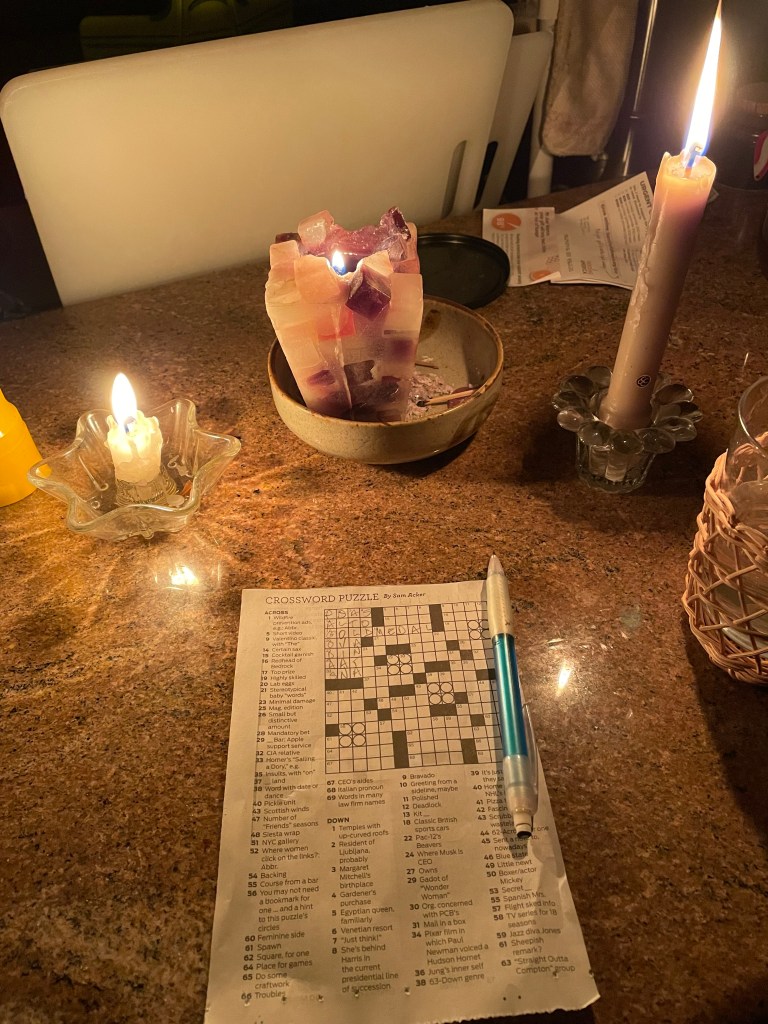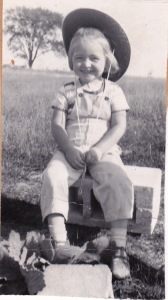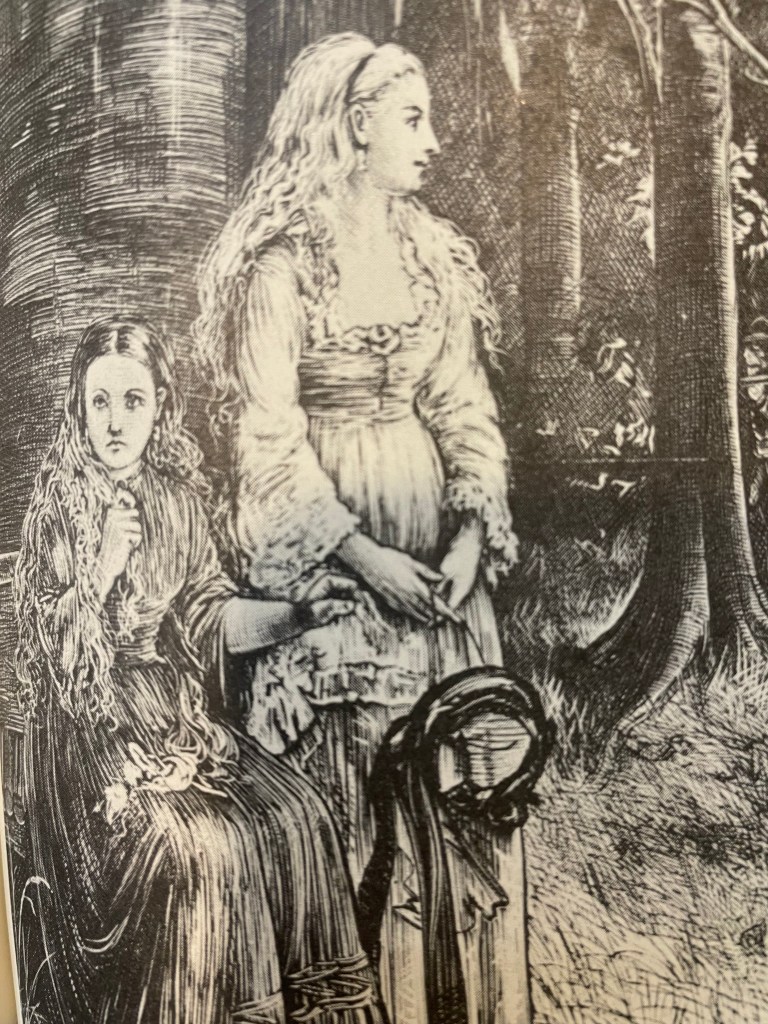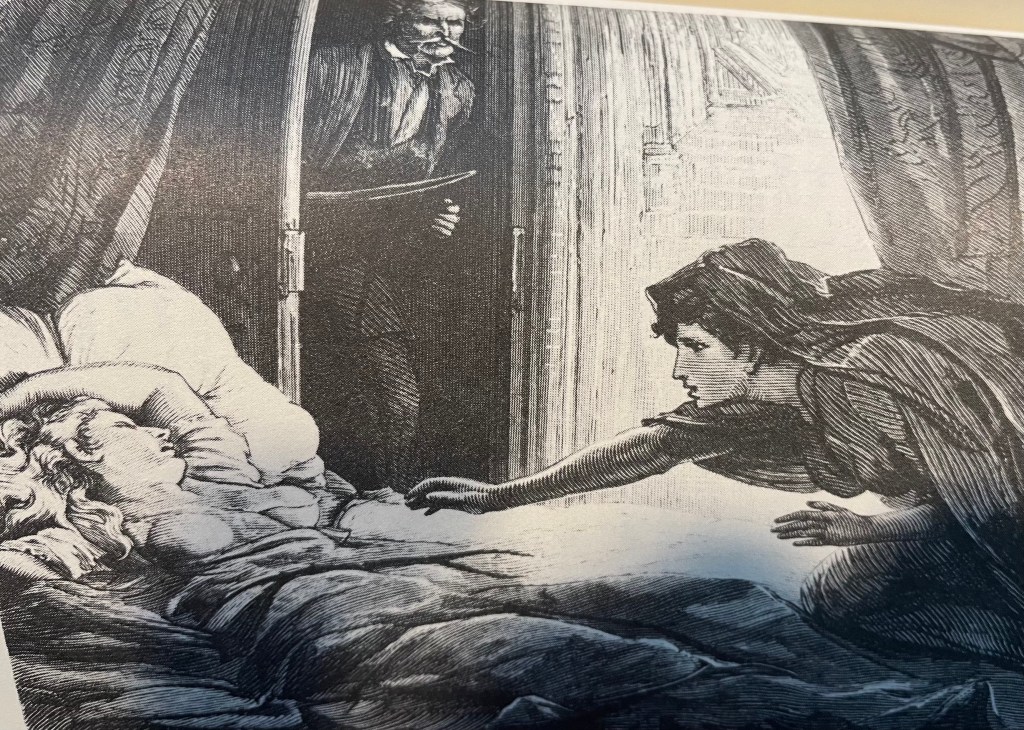
Years back, my schedule being tight because of child care and commute issues, I had the choice between two classes: Supernatural Literature and Early Christian Art. At the college I attended, art history classes required field trips and a ton of memorization and so I went with the supernatural. I’d read all the popular sci-fi novels in high school and so figured I’d be rereading books like Dune or Stranger in a Strange Land. I was wrong but I wasn’t the only one with this misconception
On the first day of class the front row of the lecture hall was full of burly young men. It was a sight rarely seen in the English Department. Generally athletes took Eng 101 and then were never seen again. When Professor Hutchins arrived on his bicycle, late and in a fluster, he took one look at the buffed up dudes and raised both eyebrows as if to say “righty-dighty!” Then he began writing the syllabus on the blackboard. He’d had some trouble, he explained, making sure the book store could purchase all of the volumes he wanted to cover. They were quite old and some of them were out of print. But, he went on to explain, he had his sources and if he could figure out the damned Xerox machine, he’d have copies of his syllabus available in his office.
He began by explaining the difference between science fiction, fantasy and supernatural. Science fiction is what could be or what exists elsewhere (in the future or the past or in a distant galaxy). Fantasy draws heavily on magic. However, supernatural literature is based on what exists but is not understood. For example: obsession, death, prophetic dreams, and yes, even romantic love. He then read this passage from Algernon Blackwood:
My fundamental interest, I suppose, is signs and proofs of other powers that lie hidden in us all; the extension, in other words, of human faculty. So many of my stories, therefore, deal with extension of consciousness; speculative and imaginative treatment of possibilities outside our normal range of consciousness…. Also, all that happens in our universe is natural; under Law; but an extension of our so limited normal consciousness can reveal new, extra-ordinary powers etc., and the word “supernatural” seems the best word for treating these in fiction. I believe it possible for our consciousness to change and grow, and that with this change we may become aware of a new universe. A “change” in consciousness, in its type, I mean, is something more than a mere extension of what we already possess and know.
Algernon Blackwood
As he read, the athletes all began shutting their notebooks and shuffling out of the class. He didn’t seem at all surprised.
We began with the Irish writer J.S. LeFanu (1814 -1873) who has been credited with adding the psychological element to what were previously creaking doors and black cat ghost stories. In his novella, Carmilla, Le Fanu was also credited with equating passionate love with death:
“… my wild heart bleeds with yours. In the rapture of my enormous humiliation I live in your warm life, and you shall die – die, sweetly die – into mine.”
The vampire to her victim
Because Le Fanu was not only a Victorian but also a Calvinist. sexual arousal was a source of contradictory feelings:
“In these mysterious moods, I did not like her. I experienced a strange tumultuous excitement that was pleasurable, ever and anon, mingled with a vague sense of fear and disgust.”
Calvinists believed that the only way to salvation was through deprivation. Anything pleasurable could lead to damnation. In Le Fanu, dreams are the portals to all sorts of mischief:
“But dreams come through stone walls, light up dark rooms, or darken light ones and their persons make their exits and their entrances as they please, and laugh at locksmiths.”
Unlike sci-fi and fantasy, in a supernatural novel there is no happy ending. The monster might be killed by the hero or heroine but the conditions that created the monster still exist.
“… to this hour the image of Carmilla returns to memory with ambiguous alternations – sometimes the playful, languid beautiful girl; sometimes the writhing fiend I saw in the ruined church; and often from a reverie I have started, fancying I head the light step of Carmilla at the drawing room door.”
The ending of Carmilla
The title of this post is from the 1963 version of Best Ghost Stories of JS LeFanu, Introduction by E.F. Bleiler.
You can probably guess that Carmilla was the inspiration for Bram Stoker’s Dracula. I don’t know which … a beautiful young woman or a handsome middle aged man … makes a more frightening vampire. What do you think?





Thanks for telling us this fascinating backstory! I had no idea.
You’re very welcome. Glad to enjoyed it.
I’d go for fantasy, though magical realism is what I’d always choose, rather than magic.
(Great post.)
Magical realism is probably closer to the supernatural than fantasy but I guess it depends. In fantasy we can generally tell the good guys from the bad buys.
There’s a supernatural element in it, though the protagonist sees it as real.
You’re probably right.
This was wonderfully enlightening, Jan, if I may call you Jan.
Algernon… Flowers for a fellow who experienced an expanded consciousness. Beyond nature, yet still within it, seems like a genre I am drawn to. Science Fiction proposes too many fantastical assumptions, most of which I cannot entertain. Magic, nope, magic is dead to me now. But powers of the natural world that exist beyond our knowledge, yet, for some, exist within their grasp — that speaks to me.
Of course. Jan’s the name. Have you read Blackwood’s “The Willows” ?
I’m afraid not. Will seek it out, now that you mention it.
And of course it’s “Jan”, but presumption begs impertinence which is the last thing I would ever want to be accused of.
Then again, I’ve oft heard the likes of: “‘Mole, you’re such a cheeky scoundrel!”
Found it on Gutenberg Project. Raced through it. I must say, I’ve seen the Danube, been to Vienna, and would never have imagined it this way. This feels like Studio Gibli’s Spirited Away, of course, decades before the fact.
The telling comes across as much more in touch with the senses, the vibe of the moment than what I could probably describe. And the imagination, a hundred years ago, that’s something. Maybe the focus is such on this other-worldliness comes from not having all the magic and science as sources to dilute the story.
Thanks. Rather makes me willing to invest more words to evoking stronger character investment in their own emotions and beliefs.
My father used to take us on backpacking trips into the wilderness and so the Willows really freaked me out. Luckily things never got so tense that my father decided a human sacrifice was necessary to appease the pagan gods. Undoubtedly I would have been the chosen one! We all turn into believers in pagan rituals when we find ourselves at the mercy of nature.
I enjoyed the Halloween and literature theme here, Jan, and the beautiful drawings. I liked your description of the English class, too. Last night I watched the 1931 version of Dracula produced by Carl Laemmle Jr. starring Bela Legosi, it’s really well done, and a good not-spooky Halloween film. Happy Halloween!
I have a passion for Victorian era illustrations. They go perfectly with both supernatural stories and children’s fairy tales. Hope you’re having a great day – can’t complain about the beautiful crisp fall day here in Norcal!
Clver to use that title from the 1963 intro
And JT – I love learning about lit and about past experiences with classes relating to it – and can imagine the athletes leaving
English lit classes require a lot of reading and often the writing is very archaic. So they’re definitely not the place to get easy credits!
Excellent post, JT!
I thoroughly enjoyed reading about your art class, where the burly guys ran away, and about Carmilla.
I think a female Vampire is scarier. After all, Stoker only followed what J.S. LeFanu began.
There’s nothing like the real thing. In this case an original!
Carmilla has been called a lesbian vampire story but I think many young girls form close attachment with their friends which are often passionate. Especially girls who are living in isolation. However Stoker probably realized that having a male vampire seduce a sweet young girl would appeal to a broader audience and he was right.
How nice that you got to study literature at university. I’ve always wanted to but have never managed it and probably never will. I didn’t know about Camilla but I love Dracula. There are four lady vampires in Dracula. Lucy, and the three who appear to Jonathan Harker when he’s trapped in Dracula’s castle. I think women vampires are worse because they are described in a way that is wanton and seductive and they are incredibly beautiful and they use these features to entrap men.
I was lucky – probably the best years of my life. I live about 15 minutes from UC Berkeley and so it wasn’t that difficult. Carmilla is a novella – only about 30 pages. Not as many characters or action as Dracula. I hope you get a chance to read it.
Well, that is a happy coincidence because I am reading short stories and novels this month. I shall go and look for it now.